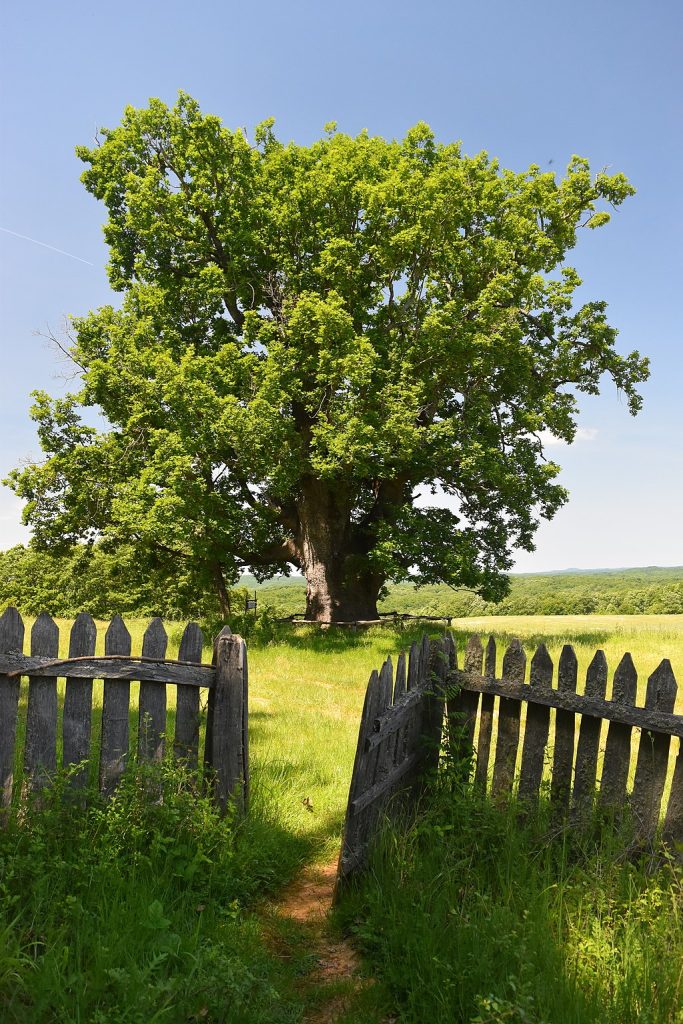Hungarian Oak (Quercus frainetto)
The Hungarian Oak, also known as Italian Oak or Quercus frainetto, is a large deciduous tree native to Southeast Europe, including Hungary, Italy, and the Balkans. This species can reach impressive heights of 82 to 115 feet (25 to 35 meters) with a broad, spreading crown that provides substantial shade. It is a robust and long-lived tree, often found in mixed forests and open woodlands.
The leaves of the Hungarian Oak are large, measuring 6 to 10 inches (15 to 25 cm) in length, and are deeply lobed with a dark green color during the growing season. In autumn, the leaves turn yellow to brown before falling. The tree produces small, inconspicuous flowers in the spring, which develop into acorns by the autumn. These acorns are a vital food source for wildlife, including birds, squirrels, and other mammals.

Photo by TodorBozhinov
Hungarian Oaks thrive in deep, well-drained soils and prefer sunny locations. They are relatively slow-growing but can live for several centuries, making them a significant presence in the landscape. The tree is tolerant of various soil types but performs best in fertile, loamy soils.
The wood of the Hungarian Oak is hard and durable, making it highly valued for construction, furniture making, and flooring. The tree also plays a crucial ecological role, providing habitat and food for various species, and contributing to the biodiversity of the forests it inhabits. Hungarian Oaks are often planted in parks and large gardens due to their impressive stature and attractive foliage.

Photo by S. Rae
Scientific Classification of Hungarian Oak
| Kingdom | Plantae |
| Clade | Angiosperms |
| Clade | Eudicots |
| Order | Fagales |
| Family | Fagaceae |
| Genus | Quercus |
| Scientific Name | Quercus frainetto |

Photo by Somepics, CC BY 3.0 https://creativecommons.org/licenses/by/3.0, via Wikimedia Commons
Quick Information
| Plant Type | Deciduous tree |
| Identification | Height: Typically 82 to 115 feet (25 to 35 meters) tall Leaves: Large, deeply lobed, dark green, 6-10 inches (15-25 cm) long Stem: Thick, deeply furrowed bark Flowers: Small, inconspicuous; appear in spring Roots: Deep and extensive root system Growth Habit: Broad, spreading crown Crown: Dense and rounded |
| Distribution | Native to Southeast Europe, including Hungary, Italy, and the Balkans |
| Habitat | Grows in well-drained, fertile soils; commonly found in mixed forests and open woodlands |
| USDA Hardiness Zone | 5 through 8 |
| Growth Rate | Slow to moderate; typically grows about 12-24 inches (30-60 cm) per year |
| Lifespan | Long-lived, often several centuries |
| Growing Conditions | Sunlight: Full sun Soil: Well-drained, fertile soil; prefers deep, loamy soils Water: Requires consistent moisture, especially in youth |
| Drought Tolerance | Moderate; prefers moist conditions but can tolerate short periods of drought |
| Diseases | Susceptible to oak decline, powdery mildew, and root rot |
| Pests | Oak processionary moth, aphids, and caterpillars |
| Reproductive System | Monoecious; produces both male and female flowers |
| Propagation | Through seeds (acorns) or vegetative methods such as grafting |
| Wildlife Value | Provides food (acorns) and habitat for various species, including birds, squirrels, and insects |
| Uses | Timber for construction, furniture, and flooring; ornamental planting in parks and gardens; ecological role in supporting forest biodiversity |
| IUCN Conservation Status | Not currently listed as threatened; widespread in its native range |
